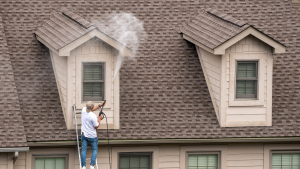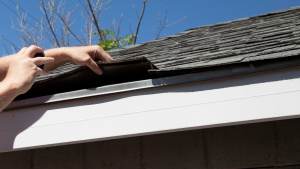Stucco is an attractive, low-maintenance building material that can raise the value, curb appeal, and attractiveness of your home. Yet there are other environmental and workmanship-related factors that could cause your stucco to deteriorate. Let’s review them immediately in a brief manner.
Stucco failure’s most typical causes
Stucco is an attractive, low-maintenance building material that can raise the value, curb appeal, and attractiveness of your home. Yet there are several environmental and workmanship-related factors that could contribute to the failure of your stucco.
The door or window sill was improperly installed
It may be difficult for water to effectively drain off the property if a door or window is installed incorrectly or inappropriately, which could cause problems. With regards to windows, if a stucco installer didn’t properly place water-resistant paper behind the window, water may be trapped, which could result in mold growth and structural damage.
If there isn’t a robust barrier keeping moisture out, your stucco work will eventually crack and deteriorate.
A mistake was made installing the flasher.
If your kick-out flashing diverters, one-piece molded plastic or metal parts required to properly guide water flow, are missing or improperly installed, you could expect to see cracking and deterioration in your stone and stucco work.
Poor sealing of the vents, electrical outlets, and other points of entry for moisture
In a manner similar to how window frames should be constructed, dryer vents, light fixtures, pipelines, and electrical outlets should also be constructed properly to minimize moisture intrusion, which can cause stucco failure and other structural problems. These holes should not only be totally impermeable but also have appropriate water management systems around them.
Unsatisfactory deck installation
A competent deck builder should use water management techniques including barrier membranes, rain screens, and ledger board drip can flashing to protect the rim joist and anything below it (even stucco). Particularly with regard to larger decks, this is crucial. A qualified stucco inspector can find any potential problems or provide advice on how to protect your stucco if you’re intending to build a deck.
Obstacles to the transfer of materials
If all connections between these dissimilar materials have not been properly sealed for expansion and contraction, which can cause an increase in both cracking and water penetration, transitions between stucco and other building materials, such as stone, concrete, siding, and brick, may be troublesome. In the same way that flashing around windows, doors, and chimneys is essential to ensuring that water drains effectively, it can also assist prevent serious damage to stucco.
If you reside near Jersey Shore, contact our stucco experts for inspections, construction, or repairs.




